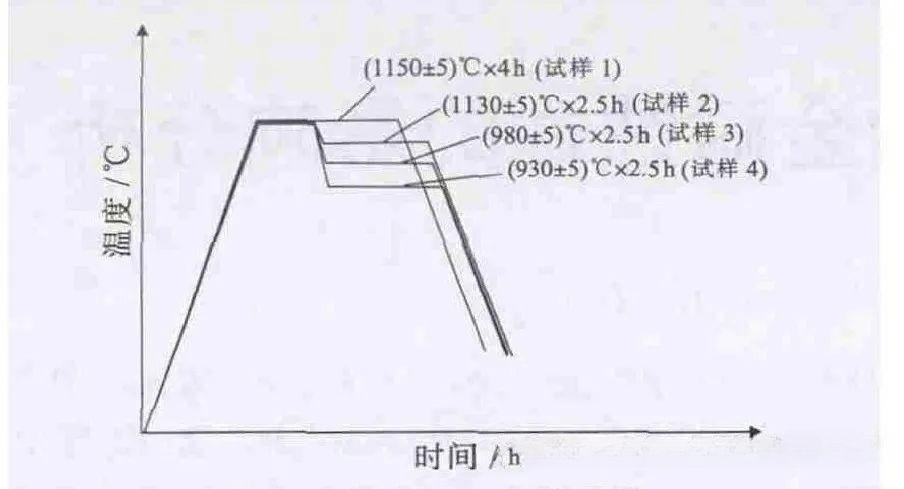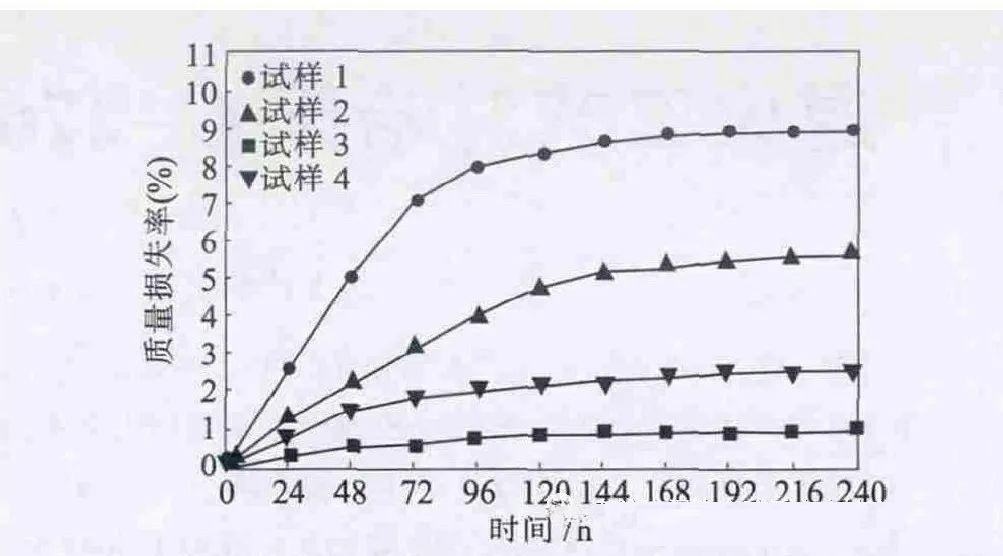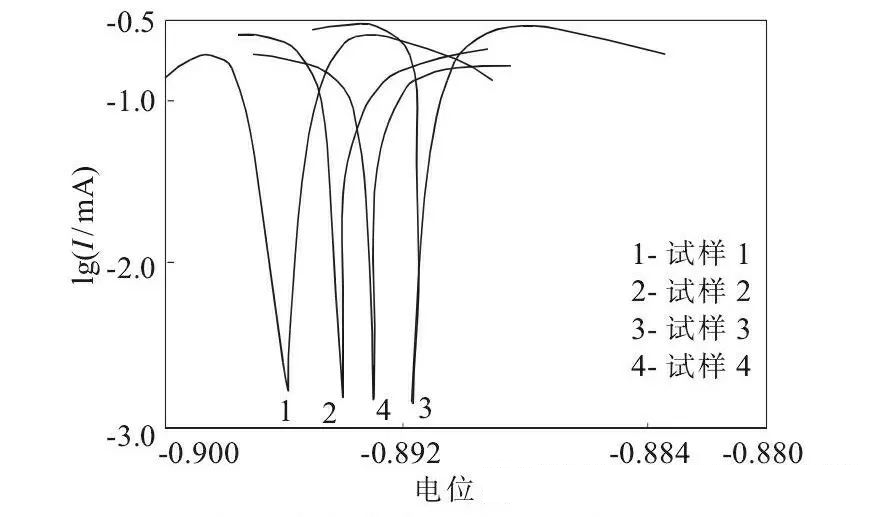Hastelloy C-276 alloy is a Ni-Cr-Mo alloy containing W. Due to its good corrosion resistance in the environment of moist chlorine, oxychloride, ferric chloride and copper chloride, Hastelloy C-276 alloy is widely used in environmental protection, chemical industry, petroleum, papermaking, heat exchange devices and other fields. With the harsher industrial environmental conditions and people’s higher and higher requirements for product corrosion resistance and reliability, the existing corrosion resistance of Hastelloy C-276 alloy is difficult to meet the actual needs, which seriously hinders its wider application. There is an urgent need to adopt new technical means to improve the corrosion resistance of Hastelloy C-276 alloy. As we all know, heat treatment is one of the effective means to improve the microstructure of alloy materials and improve their corrosion resistance [2-5]. Therefore, this paper uses different process parameters to anneal the Hastelloy C-276 alloy, and studies and analyzes the influence of the annealing process on its salt spray corrosion performance and electrochemical corrosion performance, and proposes a method to effectively improve the Hastelloy C-276 alloy. Annealing process for corrosion resistance of 276 alloy.
1 Experimental materials and methods
1.1 Sample material
In this experiment, industrial-grade raw materials were used to prepare the alloy in a ZG-0.2 vacuum induction melting furnace. The prepared Hastelloy C-276 alloy was tested using a Q8 direct-reading spectrometer and a HW2000 high-frequency infrared sulfur and phosphorus analyzer. Samples were tested for chemical composition. The test results of its chemical composition are shown in Table 1. Then the Hastelloy C-276 alloy is subjected to different heat treatments, and the specific annealing process of each sample is shown in Figure 1. Among them, the annealing process of sample 1 is the conventional annealing process, and the annealing process of samples 2-4 is the step annealing process with different temperatures after the improvement of this experiment.
Tab.1 Chemical composition of sample (wt%)

1.2 Test method
The corrosion resistance of Hastelloy C-276 alloy samples 1 to 4 after different annealing processes were tested for salt spray corrosion and electrochemical corrosion. The specific test methods are as follows. The salt spray corrosion test is carried out in the AHL-120-NS salt spray corrosion test chamber, and the specific test is carried out in accordance with GB/T10125-1997 and GB/T 16545-1996. During the test, the samples were taken out every 24 hours, cleaned quickly, dried, and weighed, and the mass loss of the samples was recorded; after the test was completed, the mass loss rate-time curve of each sample was drawn, and the JSM-6510 scanning method was used to scan Electron microscopy was used to observe the corrosion morphology of the sample surface. The electrochemical corrosion test was carried out in a CS310 type electrochemical test system, using a three-electrode system, the working electrode was made of Hastelloy C-276 alloy after different annealing processes, the auxiliary electrode was a platinum black electrode, and the reference electrode was a sweetener. mercury electrode. The test surface of the alloy sample needs to be ground and polished, and all other surfaces are sealed with paraffin wax. The test temperature was (25±2) ℃, the electrolyte was 10wt% FeCl solution, and the scanning speed was 0.05 mV/s. Before the test, the sample was polarized at a constant potential of -1.0V for 3 min. Test the Tafel curve of each sample.

Fig.1 Annealing process curve of sample
2 Experimental results and discussion
2.1 Salt spray corrosion test results and discussion The mass loss rate-time curves of Hastelloy C-276 alloy samples 1-4 treated by different annealing processes after 240 h of neutral salt spray are shown in Figure 2. It can be seen that the mass loss of sample 1 is the most serious, and its mass loss rate after 240 h is as high as 8.91%, followed by sample 2 and sample 4 respectively; the mass loss of sample 3 is the least, the mass loss after 240 h The corrosion rate changed from 8.91% to 0.92%, which was 7.99% lower than that of sample 1 treated by conventional annealing process, and the neutral salt spray corrosion resistance of Hastelloy C-276 alloy sample was significantly improved. In addition, it can be seen from Fig. 2 that with the decrease of the graded annealing temperature, the mass loss of the Hastelloy C-276 alloy in the neutral salt spray corrosion environment first decreases and then increases, and the neutral salt spray corrosion resistance of the alloy first increases. Increased and then decreased. This is mainly because the reduction of the graded annealing temperature is conducive to the refinement of the alloy structure, and promotes the second phase in the alloy to be dispersed in the matrix structure in the form of fine particles. If the graded annealing temperature is too low, there is not enough energy to refine the alloy structure, and it is difficult to play a good role in annealing. Therefore, the step annealing temperature should not be too high or too low. In order to improve the neutral salt spray corrosion resistance of the alloy, the step annealing process of Hastelloy C-276 alloy is preferably (1150±5) ℃×1.5 h+ (980±5) ℃×2.5 h step annealing.

Fig.2 Mass loss rate-time curve of samples in neutral salt spray corrosion environment
The scanning electron microscope structure of the surface morphology of the above-mentioned Hastelloy C-276 alloy samples 1~4 after 240 hours of neutral salt spray is shown in Figure 3. It can be seen from the comparison that after 240 hours of neutral salt spray corrosion on sample 1, more irregular corrosion pits appeared on the surface, the corrosion pits were relatively coarse, and serious corrosion occurred. Compared with sample 1, the corrosion pits of samples 2 to 4 are significantly reduced, especially for sample 3, the corrosion pits on the surface are very few and small. This is consistent with the test results of the sample mass loss rate. Therefore, it can be further concluded that the step annealing process is beneficial to improve the neutral salt spray corrosion resistance of the Hastelloy C-276 alloy, and the level of the step annealing temperature also has an important impact on the corrosion resistance of the alloy. The annealing process of the alloy is preferably the process used in sample 3.

Fig.3 SEM photograph of surface topography for different samples after neutral salt-spray corrosion for 240h
2.2 Electrochemical corrosion test results and discussion Figure 4 shows the Tafel curves obtained for samples 1-4 in a 10wt% FeCl electrolyte at (25±2) °C at a scanning speed of 0.05 mV/s. It can be seen that the corrosion potential of samples 2 to 4 is significantly positive compared with that of sample 1, and the magnitude of the positive shift is sample 3 > sample 4 > sample 2. Compared with sample 1, the corrosion potential of sample 2 moved positively from -0.8958 V to -0.894 V, a positive shift of 0.0018 V; the corrosion potential of sample 4 moved positively from -0.8958 V to -0.8933 V, a positive shift of 0.0025V; the corrosion potential of sample 3 moved positively from -0.8958V to -0.8916V, which was positively shifted by 0.0042V. It can be seen that step annealing can promote the positive shift of the corrosion potential of Hastelloy C-276 alloy, and the step annealing temperature will affect the corrosion potential of Hastelloy C-276 alloy. It is well known that, under other conditions being the same, the more positive the corrosion potential, the better the electrochemical corrosion resistance of the material. Therefore, it can be considered that compared with conventional annealing process, step annealing improves the electrochemical corrosion resistance of Hastelloy C-276 alloy, and the choice of step annealing temperature has an important impact on improving the corrosion resistance of the alloy. In order to improve the electrochemical corrosion resistance of the alloy, the annealing process of the Hastelloy C-276 alloy is preferably (1150±5) ℃×1.5 h + (980±5) ℃×2.5 h step annealing.

Fig.4 Tafel curve of the sample (scanning speed: 0.05 m V/s)
3 Conclusion
(1) The graded annealing treatment can effectively improve the neutral salt spray corrosion resistance and electrochemical corrosion resistance of the Hastelloy C-276 alloy, and the graded annealing temperature has an important impact on the corrosion resistance of the alloy, and the graded annealing temperature should not be too high It should not be too low. (2) Compared with conventional annealing process, staged annealing can reduce the mass loss rate of Hastelloy C-276 alloy from 8.91% to 0.92% after 240 h neutral salt spray corrosion, and reduce it by 7.99%; ±2) The corrosion potential in 10wt% FeCl electrolyte at ℃ is positively shifted from -0.8958 V to -0.8916V, which is a positive shift of 0.0042V; the corrosion resistance of the alloy is significantly improved. (3) From the perspective of improving corrosion resistance, the annealing process of Hastelloy C-276 alloy is preferably (1150±5) ℃×1.5h+ (980±5) ℃×2.5 h step annealing.
Post time: Jul-15-2023










